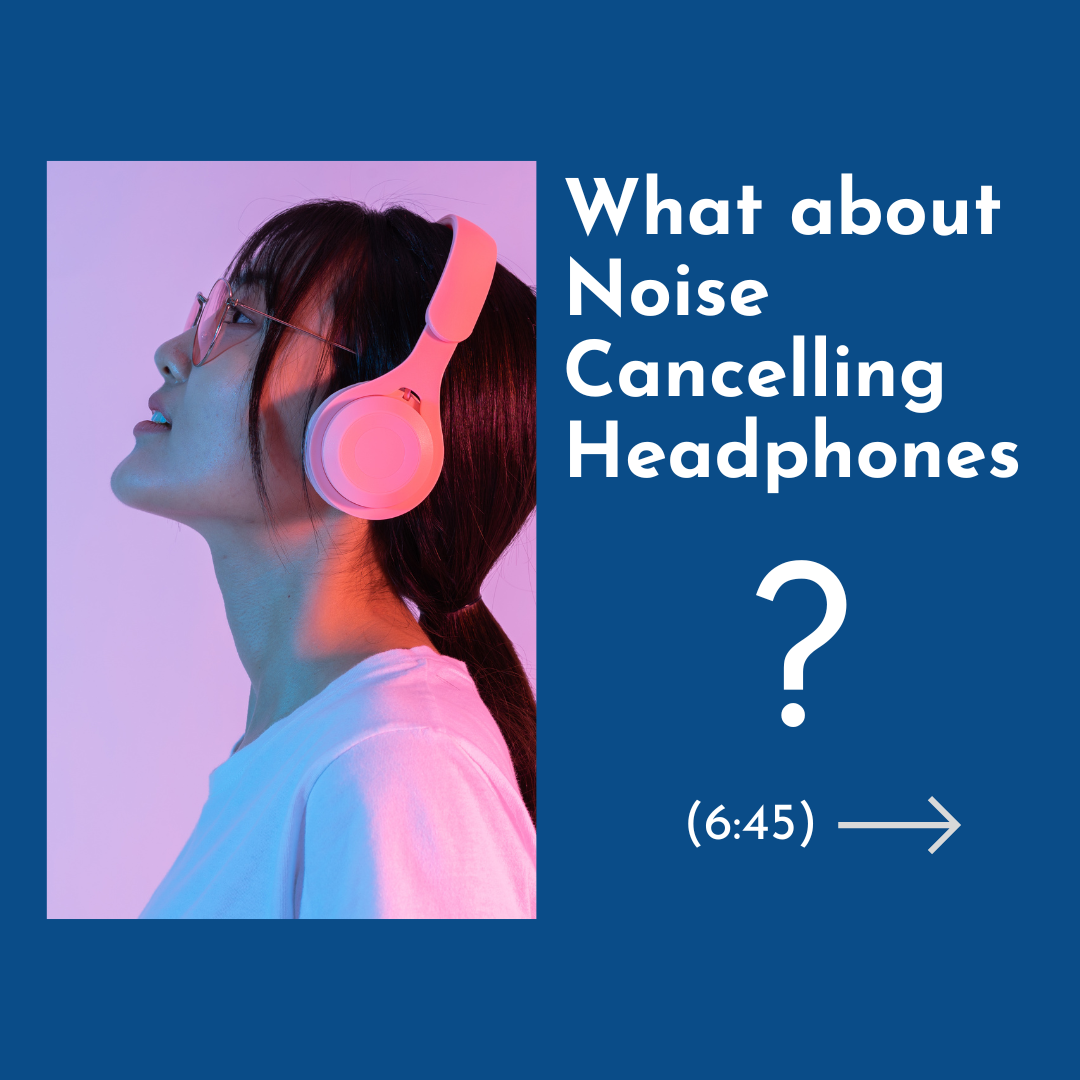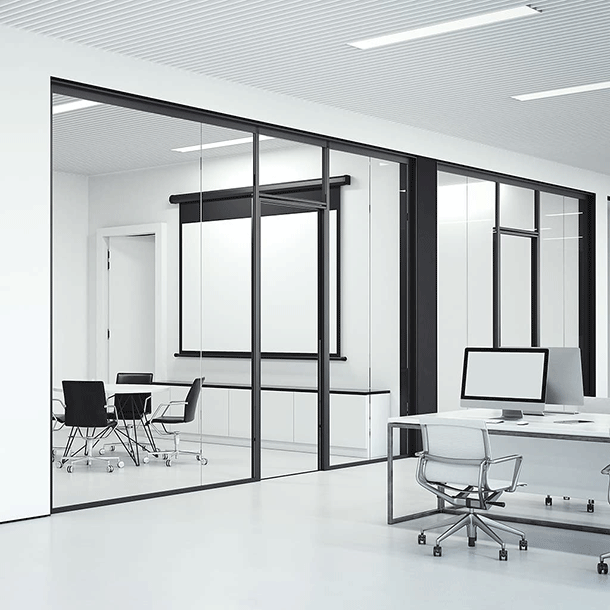Everything We Need to Know About Sound Masking, Privacy, and Comfort in the Workspace Today
Work Design Magazine Founder and Executive Publisher, Bob Fox, recently interviewed Soft dB’s Jeff Cauchon, President & CEO and Kate Paradis, Sound Masking Specialist for Southern California & Arizona. Watch the video below to see what we learned!
Meet Soft dB
Jeff Cauchon (JF): Soft dB is a major manufacturer of sound masking system for almost 20 years. We’re very well present in North America, but a lot of our business also is in the rest of the world, all the way from Tokyo to Singapore, Thailand, Malaysia, China, and Australia. Our systems have been deployed outside North America, outside the US. Soft dB sound masking system provides three main benefits to office workers: increased confidentiality, productivity, and comfort. We have a number of unique features and patents that are worldwide.
Noise On Noise (1:33)
Bob Fox (BF): Talk to me about adding noise to noise. How does that work with your system?
Jeff Cauchon (JF): In essence, what we’re doing is we’re drowning all conversation around us with this very barely noticeable masking sound in an office environment. A lot of the questions that we also are asked, is the signal level or the sound of that masking sound, are the levels very high? And the answer is no. Sound masking levels are much too low to create any problems. A typical sound masking level is around 43 to 44 dB. That’s exactly the same level that you’ll find in a quiet library. Sound masking is recommended to help patients sleep in hospitals and reduce stress in an office space. And for animals!
Kate Paradis (KP): We recently did the San Diego Humane Society; they just installed a sound masking system and they sent us videos of their dogs just peacefully sleeping so we know it reduces distractions for animals as well! So that’s pretty cool.
What’s the Right Solution? (2:33)
BF: How does a client determine the right solution?
JF: The process, which is the same for all of our customers worldwide, is forming three main steps.
First, a Soft dB specialist will typically visit the site and identify the needs with the customer. Then we will review the customer office layout, the ceiling height, the ceiling type, the plenum height, the type of furniture and sound absorbing material inside the office. And based on that, we’ll produce a very detailed sound masking plan that locates all precisely in the office space where Soft dB speakers are and then a controller and the sensors as well. Then we present the proposal, the customer hopefully accepts the proposal so that goes up to the second step, which is the installation process, supervised by Soft dB, performed by a certified installer, typically a low voltage integrator installer.
And then the third and last step is the most important one. This is where we differentiate ourselves a lot in the marketplace. We perform a full acoustic calibration of every zone of every project. A typical office space is divided up in different zones. Then a Soft dB specialist, like Kate, will go to the site with a class one microphone and acoustically calibrate each zone of the project. It’s also a very important way for us to do a quality assessment of what we’ve done, and what the installer’s done, to make sure that it’s fully commissioned to our specific performance requirements.
How Can a Client Test It? (4:21)
BF: Is there a way that the client can experience that system to determine what they need or what they like?
KP: The best way would be to go to a customer site, full live system that’s already been installed. And really the magic kind of happens where we turn the system off for you.
We want it to do its job, but we don’t want you to notice that it’s there. We don’t want the whole system to be a distraction itself. Often when you ask clients that have the system installed, a couple of years after the installation, we’ll say, “hey, how do you like the system?” “Well, we forgot we had it” is often what we hear. The magic really happens and you can really see how the system works when you walk into a space that has installed and it’s fully functioning. Maybe there’s some workers present and conversations ongoing and then you turn the system off. Then all of a sudden your ears perk up. You can hear all of the conversations going on around you and it feels a little bit eerie and uncomfortable, almost like you don’t want to start speaking because you know everybody can hear crystal clear what you’re saying. So that’s kind of where the magic happens.
We can also bring a demo kit to you. We have one speaker. Our speakers are typically spaced about every 15 feet apart so if we’ve got a standard office, we fill that room with the masking sound, we can just bring the demo kit to you and you can hear it. But it’s really, really important actually when purchasing a system like this, it’s something that your employees or patrons of the facility are going to be hearing constantly. It’s quite important that you hear it before you purchase it. And definitely not all sound masking systems are the same. They’re EQ’d very differently and not all of them have the ability to customize the spectrum. I definitely highly recommend to talk to a rep and either visit a site or get us to bring a demo to you.
Can you Isolate Areas? (6:14)
BF: Can you segregate certain areas? If you wanted more privacy in one area as opposed to another area?
JF: Absolutely. Increased privacy is one of the best features of our system. Every system is custom made for the client’s office. If privacy is critical in some areas, human resources, management offices, we can have specific sound frequency spectrum and sound level for these particular office space or zones. We can also integrate adaptive sensors to increase privacy whenever needed. It really is one of the key benefits of what we do.
BF: Is it fair to say that a good set of noise canceling headphones is your competition?
KP: No, not necessarily. I’m wearing noise canceling headphones right now. Downside of that is I can’t hear who’s coming behind me. And also it’s not particularly healthy to be wearing headphones all day long, especially the in-ear type. You could do both. You could have a sound masking system and have employees wearing headphones if they choose. The sound masking system will actually fill the entire space. So you have a nice homogenous sound. You walk into the space, you don’t have to worry about it.
And also all individuals in their own kind of cones of silence with their headphones on it, it really reduces the collaboration. So in certain scenarios that makes sense, but in a lot of, activity-based work environments that doesn’t really make sense for collaborative work.
BF: I would imagine there’s a much higher level of interaction when people are not wearing headphones.

How Does Sound Masking Support the Modern Office? (7:40)
BF: I think the work environment today is evolving and there’s a lot more social activities and a lot more collaborations. I’m wondering how does a sound masking system support that type of environment?
KP: Because of that, we want a dynamic or an adaptive sound masking system. If sound masking is the same volume across all rooms, it’s not necessarily going to do what we want it to do. With private offices, for example, you don’t need the masking level super high because then again, we might be defeating the purpose. We might be actually creating more distraction for the employee if they notice that the sound is there. In private offices, we can keep that sound masking volume down, still have it there, but not super noticeable.
Then we go out to the open office areas where we have multiple people working. Maybe we have multiple cubicles, maybe like a training room that doubles as a collaborative workspace. In those areas where it can get louder, we want the masking level to be up a little bit. Hallways, for example. We can crank the sound masking level pretty loud in hallways because that will boost the confidentiality of the offices outside of the hallways.
But also we don’t really have to worry about it being a distraction there because people aren’t actively sitting, working in hallways. Having all of those different zones is a good benefit to the system and we definitely pay special attention to setting up those zones and calibrating them depending on what the space is being used for.
System Adaptability (9:12)
BF: How flexible are those systems? I think we’re seeing a lot more open environments today and there’s a variety of different types of, uh, you know, functions that are taking place in those environments. Can the sound masking system adapt or change to accommodate different functions?
JF: Absolutely. And I think it’s one of our key benefit or differentiator in the marketplace. It all comes with the use of the Soft dB sensor. I’ll show you one right now. It’s a sensor that we will typically install on a ceiling tile. So the ceiling tile will go like this. You’ll barely notice that little tip of the sensor and the sensor itself measures the background noise of a zone. here’s different zones, as you said, Bob, for different activities in an office space. The beautiful thing about this patented technology is that it measures the background noise and will react seamlessly without anybody to notice and it’s very important. We will adjust the masking sound according to the background noise in a particular zone or the conversation taking place in a particular zone. You get this feeling sometimes in an office space that everybody talks louder and the other talks louder because they want to get heard and then the background noise increases. Sometimes, ever so slightly, you need to adapt and increase the masking sound and our technology allows to do that.

Auto-adjusts to Noisy Situations (10:40)
BF: is it a dynamic system that automatically adjusts?
JF: Absolutely. Automatically adjusts and it’s unnoticeable because if we were to adjust and crank up the masking sound very loud and then bring it down very quickly, that would create more distraction, which is exactly the opposite of what we want to do. So our patented technologies allows this to take place gradually, seamlessly unnoticeable for the user.
And it’s a very important benefit and it increases confidentiality, but it also increases comfort. And as Kate was mentioning, if towards the end of the day, less people in the office, if the masking sound is set at a certain level that’s very high or that’s tailored for a number of people in the office and there’s only two or three, the masking sound becomes very loud, too loud. So we bring it down without any compromises on the confidentiality.
Individual Controls (11:40)
BF: But do individuals have the ability to control the system? Like if I were about to make a confidential phone call in an open space, can I control that?
KP: The less people that know about sound masking, the better. Most people don’t even notice that it’s there if they’re not told about it. Yes, we have the adaptive feature that will auto adjust based on the ambient noise. But if we’re in, let’s say a conference room and we have a very quiet presenter. Sound masking will actually decrease the intelligibility of speech. If we have a very quiet talker making a presentation, maybe we want to dial that down. Or if we’re on a video conferencing call, maybe we don’t need the sound masking to be on because again, decreasing the intelligibility of speech. So we have all kinds of different ways to adjust that. We can go the old school way, an analog dial on the wall, which works really great actually for training rooms and conference rooms.
We also have touch screen abilities. There’s a touch screen right on the controller, as well as we can install touch screens on the wall. We can even integrate the system with, let’s say, Crestron technology and different type of AV systems. We have all kinds of different ways to control the volume in different rooms and that’s why Soft dB’s system is great because we can customize that control based on what you need.
Can You Control the Sounds? (12:57)
BF: There’s that sound of a coffee shop. Can I get that in your system?
JF: Our system has the ability to broadcast any type of music as we have an auxiliary input for our controllers in any zone, any floors of a building, we can have music, we can have paging also. Our experience shows that a neutral masking sound is superior for comfort and productivity since it doesn’t contain any audible information and it’s more subtle.
Some types of music or sound may be very pleasing to some. It may very well be very annoying to others. So a neutral, unnoticeable masking sound is the key to harmony in an office.
KP: In places like healthcare clinics, we can actually do both. We’ve installed systems, quite a few in Arizona, where the reception area has some of those sounds that you’re speaking of, nice calming waves or perhaps some music, and then the rest of the clinic is the neutral sound masking sounds. Really anything you can play on your phone or a computer, you can plug into our sound masking system and broadcast it. If you’ve got a particular app that has those specific sounds, it’s really as simple as plugging it into our controller and that’ll be broadcast to the speakers. You can use our software as well to pick and choose which parts of the facility are going to have that sound.
Interview originally published at Work Design Magazine - 10 Questions for Soft dB.
Bob Fox
Bob is an industry leader and the founding partner at Fox Architects in Washington DC, celebrating 20 years of design professionals working together to reshape the office and work environment. Bob also publishes Work Design Magazine, which, with its thousands of global subscribers, is the premier online publication dedicated to workplace strategy, information, and resources. Bob earned his B.A. in Architecture from Temple University in Philadelphia.





